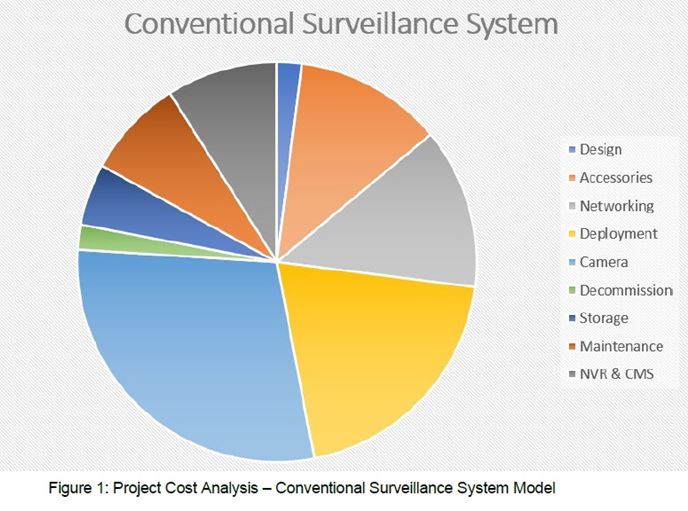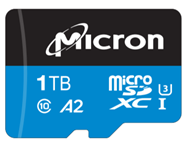The global IP video surveillance and VSaaS market is growing, particularly in the residential and small-to-medium business sectors. Valued at $18.51 billion in 2018, the market is projected to reach $52.98 billion by 2026—registering a CAGR of 12.9% from 2019 to 2026 [1]. As a result, huge volumes of data will be produced, requiring system optimization among data storage, data processing and communication—revolutionizing the VSaaS model.
This solution brief describes VSaaS, how it can lower the TCO of a conventional video surveillance system, and how to select a suitable VSaaS solution for your business.
VSaaS vs. Conventional Video Surveillance Systems
For most of business owners and managers, reducing expenses is a top priority. One way to do so is with technology. Technology can not only help make operating a business more efficient, it can also make it easier to lower certain expenses. Case in point: cloud-based services.
If you own or manage a business, you may be familiar with certain financial terms, including CapEx and OpEx. Both terms refer to business expenses, but in different ways:
• Capital Expenditures (CapEx) are funds used by a company to acquire, upgrade and maintain physical assets such as property, buildings, technology, and equipment. CapEx is often used to undertake new projects or investments by a company.
• Operating Expenses (OpEx) are the expenses a business incurs through normal business operations. Operating expenses include rent, inventory costs, marketing, payroll, insurance and funds for research and development. The biggest benefit of OpEx is that it can be fully deductible, which means these expenses can be subtracted from revenue when calculating profit and loss.
In a 2017 Micron case study [2], a total cost of ownership (TCO) analysis was done on a video surveillance system implemented in a newly built manufacturing plant. In that case study, the total project value to deploy a 600-camera system was estimated at approximately $850,000 USD over a three-year contract term. (Figure 1 shows the project cost analysis in reflected relative percentages.) As described above, this conventional video surveillance system implementation would be classified as a capital expenditure (CapEx).

When looking at ways to reduce costs with implementing a video surveillance system such as this, one could look at reducing equipment/ technology cost. However, because a video surveillance system is an important investment for a business or company, reducing spending by purchasing low-quality equipment or legacy technology is not ideal. One way to achieve cost reduction is to consider a Video Surveillance as-a Service (VSaaS) implementation—where certain functionalities are paid with a “pay-as-you-go” model, like an annual subscription plan, instead of with an upfront payment. In this way, the annual subscription fee could be classified as an operating expense (OpEx), which may be deductible.
If we do a simulation model and apply a VSaaS into the 2017 case study and analyze cost structure, approximately $60,000 USD in 3 years would be saved, based on a 23.85% worldwide statutory corporate income tax rate [3]. This is because the cost of maintenance, equipment (network video recorder [NVR] and central monitoring system [CMS]), decommission and storage would be covered by a VSaaS subscription plan, which would reduce the cost of accessories and deployment of the NVR and CMS. Additionally, 30-32% of total project cost would move to “3-year VSaaS subscription fee”, which may be classified as OpEx. (This is a simulation model; consult your accounting team for your specific use case).

VSaaS Models
A VSaaS system can be categorized by its storage location and divided into three different models:
- Hosted VSaaS: Video is generated onsite and transferred over a network to the service provider’s data center where it is managed and stored. The recorded video at the service provider’s site is delivered over the cloud as a service.
- Managed VSaaS: Onsite video recording is stored at the customer site and remotely maintained, monitored, and managed over a cloud service.
- Hybrid VSaaS: A combination of hosted and managed VSaaS, the video is stored primarily onsite. Cloud storage is leveraged as backup if redundancy or longer storage retention is required.
Considering the 600-camera system deployment case described previously, upload bandwidth and networking reliability would be a challenge with a Hosted VSaaS model. A preferred model in this case is the Hybrid VSaaS, where utilizing the capacity of on-premise storage can enhance system reliability.

Benefits of Edge Storage in a Hybrid VSaaS
Edge storage—the use of in-camera onboard storage as the primary storage—becomes a preferred choice for the Hybrid VSaaS model because it offers these advantages:
- Lower storage acquisition cost: By adopting edge storage for the on-premise storage in a hybrid VSaaS model, the need for onsite recording systems is eliminated, resulting in a reduction of total storage acquisition cost (for example, the cost of NVR, installation and power consumption).
- Flexibility: Using edge storage offers more flexibility to allocate storage capacity for different storage retention requirements.(for example, 4K camera for 60 days storage, 1080p camera for 30 days storage, warehouse camera for 90 days storage, reception camera for 30 days storage, and so on.)
- Scalability: Adding a new camera with edge storage is easy--simply install the camera with onboard storage and cloud authentication.
- System reliability: Using edge storage helps reduce the risk of stop monitoring caused by local recording system downtime.
Micron’s Industrial microSD Card for Hybrid VSaaS
Micron’s industrial microSD cards are specifically designed for edge storage workloads4, enabling an in-camera edge storage solution with capacity requirements and features ideal for a Hybrid VSaaS model:
- Storage densities of 32GB, 64GB, 128GB, 256GB, 512GB and 1TB – more video can be stored at the edge, increasing design flexibility
- Three years of high-quality, continuous, 24x7 video recording in a wide range of temperatures and environments
- A two million hours mean-time-to-failure (MTTF) or 0.44 percent annualized failure rate (AFR)
- Optimized design for continuous video recording that minimizes frame drops
- Health Status indicator to self-monitor and track usage and expected useful life remaining
Spotlight: Eagle Eye CameraManager Hybrid VSaaS Solution
Eagle Eye Networks, the global leading cloud surveillance service provider, offers cutting-edge cloud surveillance solutions optimized with Micron’s Industrial microSD card for Hybrid VSaaS usage.
Supporting all bandwidth environments and eliminating bandwidth constraints, these systems provide on-premise storage with Micron Industrial microSD cards in combination with cloud storage capability for reliable and cost-effective hybrid VSaaS solutions.
The cloud VMS scales to unlimited locations, cameras, and users, allowing you to view multiple locations, increase video retention, and add additional cameras from a mobile phone app. Powerful AI analytics help create long-term strategies, reduce costs, and increase operational efficiencies. Eagle Eye Networks’ cybersecurity expertise, features and architecture enable a truly secure video surveillance system.

References
[1] Allied Market Research
[2] Micron case study: Micron’s edge storage solutions can reduce TCO $100K+
[3]Corporate Tax Rates Around the World | Tax Foundation
[4] Products are warranted only to datasheet specifications, and subject to terms of sale
About Micron
We are an industry leader in innovative memory and storage solutions transforming how the world uses information to enrich life for all. With a relentless focus on our customers, technology leadership, and manufacturing and operational excellence, Micron delivers a rich portfolio of high-performance DRAM, NAND and NOR memory and storage products through our Micron® and Crucial® brands. Every day, the innovations that our people create fuel the data economy, enabling advances in artificial intelligence and 5G applications that unleash opportunities — from the data center to the intelligent edge and across the client and mobile user experience. To learn more about Micron Technology, Inc. (Nasdaq: MU), visit micron.com.
 About Eagle Eye Networks
About Eagle Eye Networks
Founded in 2012, Eagle Eye Networks, Inc., is #1 in cloud video surveillance worldwide, addressing the needs of businesses, alarm companies, security integrators, cities, and individuals. Eagle Eye’s 100% cloud-managed solutions provide cloud and on-premise recording, bank-level security and encryption, and broad analog and digital camera support – all accessed via the web or mobile applications. Businesses of all sizes and types utilize Eagle Eye solutions for operational optimization and security. All Eagle Eye products benefit from Eagle Eye’s developer friendly RESTful API platform and Big Data Video Framework, which allow for indexing, search, retrieval, and analysis of live and archived video. Eagle Eye’s open Video API has been widely adopted for integration in alarm monitoring, third party analytics, security dashboards, and point of sale system integrations.
Eagle Eye sells its products through authorized global resellers and installation partners. Headquartered in Austin, Texas, USA, Eagle Eye has offices in Europe and Asia-Pacific. For more information, visit www.een.com
















